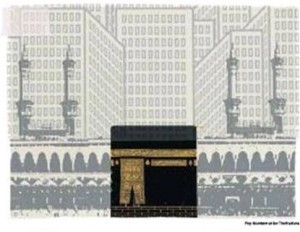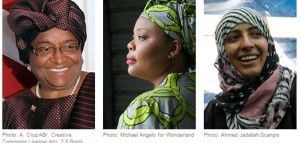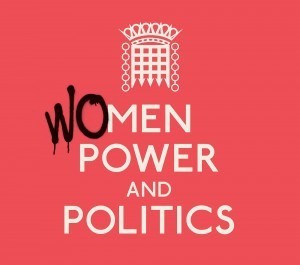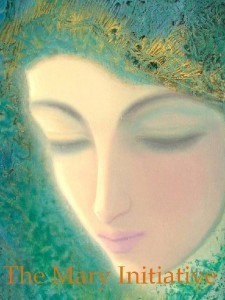Shelina Zahra Janmohamed's Blog, page 13
November 21, 2011
Muslims who can lead in multicultural societies
This article was written for Common Ground News service.
LONDON/DOHA: Multiculturalism has come under increasing attack in the last few years in Europe, as societies struggle to make sense of how to bring together communities of diverse backgrounds. German Chancellor Angela Merkel declared multiculturalism a "failure" and her sentiments were echoed by British, Italian and French leaders. Their comments came following rising far-right sentiment against the growing Muslim populations in these countries.
Theos, a public theology think tank based in the UK, released a report this October, "Multiculturalism: A Christian Retrieval", which calls on political leaders to support multiculturalism, asserting that it is the only way to deal with today's diverse societies.
Borrowing the definition from Tariq Modood, one of the leading authorities on ethnic minorities in Britain, the report refers to multiculturalism as "the political accommodation of minorities formed by immigration to western countries." The Theos report argues from a Christian perspective to "not lose sight of its [multiculturalism's] indispensable contribution to realizing a just society." The very fact that they are addressing the issue of multiculturalism is important for the debate because it highlights that it's not just Muslims, but other civil society actors as well, who deem it a positive and much needed contribution to society.
The report also says that multicultural justice is a concept that offers governments a method to deal with the challenges of establishing "fair and respectful public relationships among the minorities."
Establishing justice is also a priority for all religions, as well as for modern society. If multicultural societies hold the key to realizing a more just society, then the only wise option is to harness their vitality.
Interestingly, the report highlights that a just multicultural democracy best emerges when moral bonds are nurtured within wider civic society rather than by government alone. This means that civil society needs to take up the important work of protecting its minorities and establishing their place at a leadership level to achieve the kind of justice the report refers to.
One initiative that draws its inspiration from Muslims – in order to address exactly these challenges of multicultural societies – is the Mosaic International Summit, which began on 15 November in Qatar.
Global society is in the midst of a "youth bulge", which is especially pronounced in many Muslim-majority countries. In fact, 780 million Muslims under the age of 25 comprise 11 per cent of the entire world population. As we've already witnessed in the Arab Spring, the future significance of these youth is undeniable.
Muslims are inherently connected through the concept of the ummah, the global multicultural Muslim nation. Future leaders will need to deal with the diversity of its population of 1.6 billion, as well as with the diversity of the entire global community. Furthermore, most Muslim countries have large minority populations, or are themselves significant minorities increasingly taking up leadership positions.
The summit, open to delegates from all backgrounds — not only Muslims — brings together 80 individuals, aged 25 to 35, from 17 countries as diverse as Afghanistan and Algeria to Indonesia and Iraq. It is the third such summit organized by Mosaic, a charitable initiative based in the UK under the auspices of HRH Prince of Wales. Mosaic's mission is to create opportunities for young people of all backgrounds growing up in deprived communities.
Delegates at the summit are taking part in a structured, ten-day program of skills-based workshops and project work aimed at familiarizing them with leadership theories while also equipping them with practical leadership skills.
Following the summit, Mosaic will support its delegates for an additional year and ask them to report back every three months on how they have applied their new insights and skills. Delegates from last year's summit developed projects like a workplace volunteer program, fundraising events for local families in need, and even created a social entrepreneurship module for students pursuing advanced degrees in business.
As a result of this summit, Mosaic's delegates are able to experience new countries and cultures, and meet potential leaders from a diverse range of backgrounds. In turn, part of the training entails ensuring delegates are exposed to a mix of new perspectives and environments, which is one of the reasons why Qatar was chosen for the summit's location. In light of this year's events surrounding the Arab Spring, the Middle East continues to offer inspiration to young leaders.
As it turns out, building a community out of multiculturalism is not a paradox. Rather, leaders trained to lead multicultural societies can create stronger, more cohesive and more just communities.
Shelina Zahra Janmohamed is the author of Love in a Headscarf and blogs at www.spirit21.co.uk. This article was written for the Common Ground News Service (CGNews).
November 13, 2011
Mark Twain's century old story still has something to tell us about wealth and financial crises
This week's column from The National
In 1893, Mark Twain wrote a short story called The Million Pound Bank Note. Two wealthy British brothers give said note to an American pauper who arrives in London. They have secretly made a wager on whether he can survive for a month without ever cashing the note.
By presenting the note, the American eats in restaurants, buys clothes and acquires lodgings. Since no ordinary shop can change it, he is extended credit, and becomes the object of sycophancy. Realising that he never need actually spend money to gain goods, he offers his name to back a mining project being floated by a friend on the stock exchange, and walks away with £200,000.
Light-hearted the story may be but it offers insightful social commentary. The richer you appear to be, the more money you can make, the more people fawn over you and the less you actually need to contribute to the economy and society. The mere illusion of wealth is sufficient.
In 1953, the tale was adapted into a film starring Gregory Peck. The updated plot reflected the slow death of the British Empire, with Peck representing America's rising sun. This time, the American loses the note, which prompts a loss of confidence at the stock market in his mining venture. With the illusion of his wealth exposed, he tries to explain to the stock exchange that the mine is a solid investment, and that the loss of a piece of paper shouldn't change that. But he is thrown out of the old boys' club, whose members only listen to those from within their own elite.
Although the film was made 60 years ago and Twain's story is more than a century old, both could easily have been produced as a parable on today's financial crisis. Growth was pegged to confidence, big names and crowd mentality, and when confidence flagged, prices crashed and the market collapsed.
Does this mean we should accept that when it comes to wealth twas ever thus, and shall forever be so? I don't think so. There has been a public mood shift. Social networking tools, the unparalleled enormity of the financial crisis, the rising concern over environmental sustainability, the growing disparity between rich and poor, but mostly people's awareness of all of this, are the ingredients of rising discontent. Banks are bailed out, bankers are paid bonuses, MPs in Britain justify extortionate expenses, European MEPs refuse to reduce their pay. The head of the Indian Grand Prix says stop talking about India's poor and concentrate on the country's affluence.
One manifestation of the mood change is the Occupy movements around the world, most notably in New York and London. A few thousands of protesters they have rattled the closed club.
Occupy's critics say they offer no constructive alternative. In response, Occupy points to the fact that their presence is symbolic, representing deep global discontent with those who uphold a system that protects only its own interests. Their protest is clearly aggravating, despite being peaceful. Importantly, Occupy offers a space to discuss new options and learn from the perils of our attitudes to illusory wealth.
Even though wealth continues to be distributed unequally, knowledge and awareness since Twain's time is more accessible. Perhaps this is the trigger we needed.
And if you were wondering what happened in the film, it all worked out. The American found his note and confidence was restored in the market. If only our current crisis were so easy to solve.
November 5, 2011
When death comes to the young
This is my weekly column published today in The National (UAE) and a tribute to a friend who I lost this week.
There are many things that we fear in this modern age of ours, but none more than the loss of youth. Our celebrities never age, skin creams ward off the signs of ageing, television clothes shows help us dress 10 years younger. And yet this week I was confronted with a stark loss of youth. A beautiful young woman, a new mother, not even 40, was taken by cancer.
 When death visits the young, we have many clichés to express grief: a life snatched away, the loss of potential, the unfairness of life. But she wasn't a cliché, she was a person.
When death visits the young, we have many clichés to express grief: a life snatched away, the loss of potential, the unfairness of life. But she wasn't a cliché, she was a person.
I can't trace the exact time I met her. She was one of those people I have always known, a beautiful, charming and effervescent individual. I see her in my memories smiling, working on community projects, excelling in her profession.
They found the cancer while she was expecting her first child.
After hearing the news of her death, I spent the day overwhelmed by the intensity and volatility of conflicting emotions. First, there was an almost frantic hysteria to get as much done as quickly as I could. Then, I felt abandonment. Nothing was important, nothing needed to be done. I felt numb. Then, I surrendered to the sheer sadness and wept, kept on weeping.
I even felt guilt, at the depth of my melancholy, feelings that I felt should be reserved for her close ones. I can't claim sadness, sympathy or trauma for myself. That is the right of her immediate family.
I wonder why this death has affected me so deeply. I think about the cycle of life being broken, a daughter passing before the mother, a baby being left without a parent. Is it sentimentality?
I gaze at my daughter, an innocent and entirely helpless creature, not yet a year old and only slightly younger than the woman's own little girl. Do I fear for my own precarious situation?
We imagine families with two parents, and bouncing children. It is easy to be lost in that fairy tale, immersed in a utopia where death follows old age. It's frightening when reality is not so Disneyesque.
Such an out-of-the-ordinary event makes us stop and reflect. But the surprise is that this is not as extraordinary as we might think: the risk of a woman contracting breast cancer is one in eight. And cancer among the young is not so unusual, as campaigns such as Breast Cancer Awareness month in October try to highlight.
The loss of youth is not just about cancer. Add to this other illnesses, accidents, violent crime and in some places even famine and war, and suddenly our refusal to face up to death in youth becomes stark. In the developed world we pretend we are immune from early death, that it only happens elsewhere.
The loss of one person changes the course of an entire family. Watching the news I am confronted with reports of thousands of people – individuals – killed in natural disasters and man-made conflicts. We rarely talk of the fact that the deaths of thousands of individuals actually mean thousands of families whose futures have been radically altered, often destroyed.
I attended my friend's funeral, an occasion filled with a community's sadness and love, bearing a communal loss. What we don't see, and what fills me with even greater sadness, is the grief of families in their own homes, once the last mourner has gone. All we can offer at a distance is prayer, and hope for their hearts to be healed.
October 29, 2011
Women and marriage: what's in it for us?
This is my weekly newspaper column published in The National (UAE) today
[image error]
image manwifedog.com
Whether in the East or the West, women are marrying later. This summer The Economist ran a feature piece looking at the "Flight from marriage" in Asia, which highlighted that the average bridal age is rising. So is the percentage of single women. This month, the cover story on The Atlantic Magazine, a thought-provoking American publication, is about how the marriage market is changing and women are marrying later, or not at all.
For many centuries the only way single women could achieve social standing was through marriage. Financially, they were dependent first on their fathers and then on their husbands. But with education and employment, their social status and financial independence is rising.
If marriage is no longer required for a woman to have stability or finance, what does she need a husband for? Why would they want to go into the kind of domestic servitude that some marriages entail and give up a life of fulfilment and selfdetermination? Worse still, why should they engage in a traditional marriage format where the wife is still expected to do the domestic work and undertake the caring duties for the family, and at the same time work to bring in an income?
Societies that believe in marriage have to come up with better reasons to persuade women to marry. If they don't, the fallout could be significant. Women in general tend to marry up. With more women becoming educated and more successful in employment, this is leaving men at the bottom of the ladder unmarried. In countries such as India and China, the number of men already exceeds the number of women by tens of millions due to male preference under China's one-child policy as well as female foeticide. Society is generally built on a bedrock of family units and without marriage, social structures will be significantly affected. Later or no marriage means that fertility rates drop. Decades on, there will be a whole generation of older, single women. These should worry policymakers, as much as the proponents of marriage and traditional family life. What I'm most concerned about is that this is a significant loss for women themselves. As a society, we want women to be happy, fulfilled and flourishing in good relationships.
Before religious authorities get up in arms that I'm criticising marriage – I'm not. I'm a supporter of marriage. What I am referring to is the lived reality of marriage for women that is wildly different from the theory of matrimonial bliss.
Women are looking for a reality of marriage that is for companionship and fulfilment, with a partner who will support them and see them as an equal. They see domestic duties as something to be shared, they see a continuation of their independence after marriage.
Trying to resist getting women educated or marrying them off early is not going to prevent the "problem". Women are increasingly becoming aware of their rights, and education and employment among women are steadily increasing. If nothing else, families want the income. If your best argument for marriage is to restrict all other options, then you are admitting that marriage isn't very attractive on its own merits.
And therein lies the crux of the problem. Women want to get married, but they need to be persuaded of its attractions. East or West, women are wondering about marriage: what's in it for us?
October 23, 2011
Steps Saudi Arabia needs to take to enhance the hajj
Yesterday my op-ed was published in The National newspaper in the UAE.
Millions of pilgrims from around the globe will converge on the holy city of Mecca in the coming days for the pilgrimage of the Haj, the world's most diverse gathering. Last year some 2.8 million Muslims from 181 countries made the voyage to Saudi Arabia. It's a crowded, emotionally intense, physically challenging and spiritually demanding experience.
 Arriving at the Kaaba, the pilgrims fall to their knees weeping. Since they first performed their daily prayers as children they have faced towards it in worship. Their dreams of Mecca are powered by wishes to step on the sand that has seen the footsteps of the Prophet, to feel the wind that has overseen the revelation of the Quran, to be where the promise of Islam was delivered. To be in this most blessed of places, they may have saved painstakingly over decades. And finally, here they are at the doors of the House of God.
Arriving at the Kaaba, the pilgrims fall to their knees weeping. Since they first performed their daily prayers as children they have faced towards it in worship. Their dreams of Mecca are powered by wishes to step on the sand that has seen the footsteps of the Prophet, to feel the wind that has overseen the revelation of the Quran, to be where the promise of Islam was delivered. To be in this most blessed of places, they may have saved painstakingly over decades. And finally, here they are at the doors of the House of God.
Geography and history have laid the mantle of responsibility on the shoulders of Saudi Arabia, within whose borders lie the holy cities of Mecca and Medina known together as the "haramain" and from which the king of Saudi Arabia draws his title, "Custodian of the Two Holy Mosques". The honorific brings with it a heady responsibility. Modernisation and the age of the jet plane have multiplied the thousands of pilgrims who once embarked upon the road to the Haj into millions. To accommodate the pilgrims, there are ambitious plans for the expansion of the areas around the haramain, flattening almost the entire surroundings to construct multiple high rise luxury hotels, shopping centres, and access roads.
It's easy to criticise the Saudi authorities for these plans but pilgrim management is a challenging task. Muslims want to go to Mecca, and rightly so. But on arrival, they complain if facilities are not good enough, if hotels are not near enough, if paths are too crowded, if travel is too slow. Visitor numbers are rising annually, and quotas are deeply unpopular. With 1.8 billion Muslims in the world – and growing – conditions are unlikely to improve in the near future. Improvement efforts are continuous. The building around the Kaaba is multi-storeyed to increase capacity. Last year, a monorail was built to transport 70,000 pilgrims an hour. This year, pilgrims will be issued with digital smart cards to make the processing of visitors faster and smoother.
Expansion will allow Saudi Arabia to increase the number of pilgrims. Muslims will benefit through greater access and the country will increase its tourism revenue. In 2009, 12 million pilgrims brought in US$7 billion. By 2013 the goal is $15bn. Last month the chair of the Tourism and Antiquities Commission talked about tourism as a way of generating income, relieving poverty, and creating jobs. There is talk of an "Umrah Plus" programme to open up travel for Umrah visitors, who currently are not permitted to venture outside the holy cities. The commission speaks of sites such as the ancient Nabataean city in Madaen Saleh and the 300-year-old village of Rijal Alma. It is heartening to see that the Saudi authorities are realising the value of their heritage.
This is not the case for sites of Islamic religious historic importance say detractors. They point to news stories about sites in the vicinity of the haramain being bulldozed in minutes. These precious morsels of Islamic heritage will be replaced by towering luxury hotels. No wonder the global media has likened Mecca to Las Vegas.
The sites date from the time of the Prophet, his companions and the early Islamic empire. Experts say some even date back to the time of Abraham. The Quran repeatedly exhorts believers to "travel the world" and "see the fate of those who have gone before". The implicit conclusion from this is that there is a religious duty on believers to preserve historical remains.
The bad news, say critics, is that so many important sites have been destroyed that only 20 or so remain from the period of the Prophet. An example is the graveyard of Jannatul Baqi in Medina, which contains the graves of the Prophet's companions, his daughter Fatima, his wife Khadija and his grandson Hassan. It was bombed in 1926 to make the earth flat and undistinguished, all markings of these key individuals gone forever. Another site is the birthplace of the Prophet himself, which has been hidden beneath a library.
Saudi Arabia is a powerful member of, as well as the headquarters of, the Organisation of the Islamic Conference, whose 57 members represent the majority-Muslim nations of the world. It was founded in 1969 in response to an arson attack against the Al Aqsa mosque.
The OIC continues to object vociferously to the destruction of Islamic sites in Israel. At its December 2005 meeting in Mecca, the preservation of historic Islamic sites in Jerusalem including the Al Aqsa mosque was raised as an issue of grave concern. Documents talk of steps to "safeguard the city's cultural and historic landmarks and Arab-Islamic identity".
The secretary general Ekmeleddin Ihsanoglu warned of "illegal Israeli practices" and " aggressions" that aim to alter "historic landmarks". He wrote elsewhere that the OIC should "spare no effort to preserve the Islamic historical and religious identity of Al Quds Al Sharif".
In response to calls to preserve Islamic heritage sites, the Saudi religious authorities say that their destruction is to avoid shrine-worship. The Haj authorities say it is to accommodate the ever growing numbers of pilgrims.
But the Muslim world says that it wishes to see its religious and cultural heritage preserved. I say that Saudi Arabia has a religious duty – which nobody denies is a challenging one – to balance the needs of pilgrims with the need of the ummah to retain its history. For many, historic sites are a key part of the pilgrimage experience. It may be at odds with the purist Saudi Salafi tradition, but these actions are accepted within the wider Muslim heterodoxy.
Saudi Arabia needs to be cautious about giving the impression that it does not care what the global Muslim community feels – even if that differs from its own specific tradition. The more damaging impression is that it cares more about commercialisation and less about historical legacy.
Saudi Arabia also needs to ensure that the increasing cost of pilgrimage avoids pricing out the majority of the Muslim population. Even if pilgrims can scrape pennies together and use one of the low-cost Haj agencies the authorities have licensed, the "premium" focus of the tourism industry will affect the Haj experience in a profound way.
Consider that in the immediate proximity of the holy sites all the accommodation will be in luxury hotels. Only the rich will stay there, the poor shunted out of view. Haj will become a two tier experience, in opposition to its ethos of creating equality between rich and poor.
Saudi Arabia bears a heavy responsibility for the care of pilgrims and a religious duty mandated in the Quran to preserve historic religious sites. And we must not forget the responsibility of maintaining the egalitarian ethos of the Haj itself. If it can achieve all of these, then it will win the hearts of the world's Muslim population, and do justice to the pinnacle of Islamic rituals.
October 16, 2011
Masterclasses in how to change the world: Nobel Women
This was my weekly newspaper column published yesterday in The National, about the women who won the peace prize.
I was thrilled to learn that this year's Nobel Peace Prize had been awarded to three women for their non-violent struggle towards women's rights and peace-building.
 Ellen Johnson Sirleaf is the President of Liberia and Africa's first-ever female elected head of state. Leymah Gbowee is a Liberian peace activist who worked across the country's religious and ethnic divides to call for an end to the 14-year civil war.
Ellen Johnson Sirleaf is the President of Liberia and Africa's first-ever female elected head of state. Leymah Gbowee is a Liberian peace activist who worked across the country's religious and ethnic divides to call for an end to the 14-year civil war.
But perhaps the one who has garnered the greatest attention is Tawakkol Karman of Yemen. A Muslim woman from one of the world's poorest countries who once wore a face veil seems an unlikely candidate for a global peace prize. That's because her religion, her gender, and her politics raise some challenging questions across the political spectrum.
On the one hand she is a Muslim woman, and chooses to wear a headscarf. Her work towards empowering Yemeni women began long before the Arab Spring. Does that, finally, demolish the myth that a practising Muslim woman cannot be a feminist?
Karman wears her faith proudly, and has spoken about how she believes: "Islam is a religion that encourages freedoms and was based on the liberation of the bodies and the minds from slavery, oppression and fanaticism."
Her long history of activism challenges those who believe women of faith cannot contribute to women's empowerment, nor to the peace process, unless they exit their supposedly "oppressive" religion. Karman's strength and cultural power is derived from her religion. This point is underscored by the other two prize winners, who also have drawn on religion in their peace efforts.
I was pleased to see that the award was shared across women from different backgrounds and cultures. It is an acknowledgement that this continues to be a pan-global struggle and that there is no "one size fits all" method of improving the status of women. Women all over the world in different backgrounds are working in ways suited to their context, and not necessarily "western feminist" ways.
One of the profound challenges that Karman's prize raises is to the Muslim and Arab worlds. For those who feel pride in her recognition – particularly men – the red glow of your cheeks is not sufficient. Your pride must be demonstrated by supporting her work in improving the situation of the women around you.
I don't doubt that she has critics who say it is improper for a Muslim woman to be politically active, that she has exceeded the bounds of modesty. I say to you: she is fighting for justice, equality and freedom. She is fighting for values that you should be fighting for as a Muslim. Are you?
And I am just as sure that her award will have detractors who claim that it is a politically motivated conspiracy to "westernise" Muslim women, or that she was chosen before other possible winners because she removed her face veil. If that is the case, then why aren't you showing your own recognition of the amazing Muslim women who are protesting, struggling and being killed side by side with Muslim men? Otherwise the only conclusion is that you are willing to reap the benefits of women's struggle, but are too egotistical to give recognition where it is due.
I for one am proud of her achievements and the recognition that she has deservedly gained, and you should be too.
October 15, 2011
Book launch: British Muslim Fictions


Earlier this month I was invited to attend the launch of a fascinating book called "British Muslim Fictions". Instead of explaining it myself, I'm excited that the author Claire Chambers has agreed to write a guest post about what inspired her to write the book and what it is about. Here is Claire's post:
Writers of Muslim heritage are producing some of the most exciting and politically engaged literary fiction in the UK today, as is demonstrated by the recently established Muslim Writers Awards. But what does it mean to be a writer of Muslim heritage in the UK today? Is there such a thing as 'Muslim fiction'? If so, is it cultural background or belief that makes writing (or identity) Muslim?
British Muslim Fictions: Interviews with Contemporary Writers seeks to answer these complex questions. It is a collection of thirteen interviews with Anglophone writers who live or work in Britain and have an intimate relationship with Islam, whether they are religious or cultural Muslims, and whether South Asian, Arab, African, or European. The interviewed authors include Aamer Hussein, Leila Aboulela, Abdulrazak Gurnah, and Robin Yassin-Kassab: a highly diverse group, but, like a loosely connected and often discordant family, they share much in common through their connections both to Islam and the United Kingdom. My analysis of the interviews as a whole indicates that approaches to literature which accord due importance to religious identities will be central to future literary studies.
In the 1980s, Muslims in Britain were described as 'Black', part of a political move to cement solidarity between different groups on the receiving end of racism. In the 1990s, this term began to be seen as too broad, so 'Asian' was a preferred moniker. Since 9/11 and 7/7, there is a perceived need for still greater specificity, so the term 'British Muslim' is now in common currency. Importantly, however, 'British Muslims' form a minority group that has been demonized and the term has largely been foisted on them from outside. I believe it is important to look at this group so long as the shared religious heritage is not prioritized over specificities and contextual differences, and writers are not constricted to producing 'halal fiction'.
What have I learnt from these interviews? As well as discussing the writers' literary techniques and the impact that their Muslim heritage has had on them, I became increasingly persuaded that this body of writing shares certain preoccupations (relating to gender, class, the 'war on terror', al-Andalus, the Rushdie Affair, and a cosmopolitan outlook). Like many people influenced by the stereotyping of Muslims in the media, I began my research by making airy generalizations about Islam, but my engagement with these heterogeneous authors means that I am now more likely to speak of Muslims or 'people of Muslim heritage'. Yet I have also had my mind opened to the variety and richness of Islam, from Sufi practices and cultural accretions to what Nawal El Saadawi calls 'establishment Islam', and to the poetry and profundity of the Qur'an.
The book is entitled 'British Muslim Fictions', because it seeks to provoke thought about whether we can or should categorize literature according to religious identity. Additionally, representations by certain writers and journalists of such issues (assumed to relate to Muslims) as 'offence', veiling, the 1989 fatwa and the concept of jihad, may be viewed as constituting other kinds of fictions. Robin Yassin-Kassab writes, '[A]s Muslims in Britain, many fictions are being written about us. Many are presented as fact. […] So we should write back'.
I hope that the book illustrates that this group of writers, who identify themselves as being of Muslim heritage, are writing back with nuance and verve. It has been a privilege to work with them, learn from their creative works and in conversation with them, and to bring certain of them into classrooms to work with young Muslims in the hope that some of them will be writers of the next generation.
Many thanks to Claire for writing especially for Spirit21 and I wish her every success with this book and future publications.
If you want to get in touch, Claire's webpage is here.
October 9, 2011
The politics of being a woman
This was my weekly newspaper column published yesterday in The National

Image from the Tricycle Theatre
The UK prime minister has been having women trouble recently. First, David Cameron told a female MP to "Calm down, dear!" mimicking the strapline from a television commercial. He called another "frustrated", and then joined in with smutty schoolboy giggling with his male colleagues. Accused of being sexist and patronising, he apologised, saying the pressurised environment meant his words came out wrong. But pressure is what reveals your true colours.
At this week's Conservative Party conference he was constantly accompanied by female MPs, hoping no doubt that this would make him seem more women-friendly and less of a "chauvinist pig", as one journalist suggested.
The female MPs have also come in for criticism, being accused of being used by the PM as "eye candy". But I say to them: make the most of the opportunity. All ambitious individuals wait to get the ear of the boss for 30 seconds. Go for it, take your chance, make a pitch and make a difference. This isn't a favour to you – you have every right to be there.
Men should be cautious of selecting women purely because they are women, in order to claim they are promoting the rise of women or to capture the female vote. John McCain did that in the US elections in 2008 by selecting Sarah Palin as his running mate. Boy, did he get it wrong.
Women are not pawns in male power plays. Women are smart and cynical too. Cameron should know that a few photos with the women of his party won't count as evidence that he's in tune with Britain's women, especially as his austerity measures affect them disproportionately.
The media has dubbed Cameron's female MPs as "Cameron's Cuties". This echoes the label given to 101 female MPs elected in 1997 as "Blair's Babes". Blair did nothing to pull up the media on their own sexist patronising descriptor, basking in the glory instead. Cameron should be wiser and challenge the cutie titling.
The Pakistani PM has taken pride in the appointment of Hina Rabbani Khar as the first female minister of foreign affairs. She was elected into her father's constituency when new candidate guidelines meant he could no longer stand. She's had a different start, but now in office, like her British female counterparts she ought to take advantage by exhibiting the right competencies, and quickly move away from the token female positioning bestowed upon her in her case by Daddy's reputation and the overly proud words of her PM.
My worry for Khar is that she may be playing herself into the "cutie" role. In a trip to India it was her sunglasses and Birkin handbag that dominated headlines. It did win her some friends among the elites for being a style icon, however, it underscored the fact that she was in her position on the back of family money, some window dressing for the powerful men of Pakistan.
Pakistan is a country that has gone through one devastating crisis after another in the last few years, and her pricey fashion makes her appear out of touch with her nation. She must avoid living up to the title of eye candy.
As a woman in politics it's difficult to strike a balance between taking advantage of opportunities that are given to you as a result of being a woman, without being treated like an empty-headed opportunistic mascot. The trick is to brush off the patronising labels and make sure that when given an opportunity, you do the best job possible, using the best skills and intelligence.
October 1, 2011
On the FT this week, global Muslim fashion – She's a dedicated – and faithful – follower of fashion.
I wrote this article for FT.com this week on the growth of global Muslim fashion
 The fashion industry is currently showcasing its wares for next year's spring/summer collections. New York and London have already strutted their stuff and with Milan winding up and Paris on later this week, you might be forgiven for thinking Europe and North America have the global fashion business stitched up. (Pun intended.) Not so.
The fashion industry is currently showcasing its wares for next year's spring/summer collections. New York and London have already strutted their stuff and with Milan winding up and Paris on later this week, you might be forgiven for thinking Europe and North America have the global fashion business stitched up. (Pun intended.) Not so.
Big fashion brands may be wondering how to stem a decline in business – Dolce & Gabbana for instance announced the closure of their diffusion line last week. But there is one growth segment just waiting to be brought into the mainstream of the industry: global Muslim fashion.
Muslim fashion? I hear you ask in surprise. Isn't that all just long black cloaks and dour headscarves? Far from it: Bloomberg has estimated that the global Muslim fashion market could be worth $96bn. For scale, compare that to the entire UK fashion industry, which is valued at £21bn. What makes it even more attractive is that those driving the development of Muslim fashion stem from a young demographic. Of the world's 1.8bn Muslims, nearly half (43 per cent) are under the age of 25 – meaning they make up more than 11 per cent of the entire world population.
Milan Fashion Week has got wise to this. Next year they have invited Malaysia's Islamic Fashion Festival to showcase its designers. Started six years ago under the patronage of Malaysia's First Lady, the IFF has already visited Abu Dhabi, Astana, Dubai, Jakarta, Monte Carlo, New York, Singapore, Bandung and London. And Malaysia is not the only place that the Muslim fashion industry is fast developing.
Indonesia has an Islamic Fashion consortium whose chairwoman hopes to establish Indonesia as a global centre for Islamic fashion. And Dubai's Fashion Week, to be held next month, aims to combine tradition with modernity. Muslim women are looking for echoes of their culture and religion in their fashion. In Dubai, this means including the traditional 'abaya' of the region into the upcoming Fashion Week. The abaya is the long black cloak beloved of women of the Gulf region, which has become popular with Muslim women around the world.
Far from reviling the abaya, Muslim women are showing pride and love for this traditional fashion form, and increasingly re-inventing it, and aspiring for it in the Western world. One woman writes here about how it brings her a sense of elegance and grace. And last year Harrods stocked a line by a Qatari designer, whose creations had Muslim women flocking to purchase items costing as much as $20,000.
The abaya has also attracted haute couture interest from designers like Galliano and Ferreti, who showcased their designs at Saks in New York at the request of some Saudi Arabian customers who commission evening dresses from them.
Primarily however, this is a grassroots development by young Muslim women wanting to combine their love of fashion with a desire to uphold the tenets of their faith in Islam. And this is where the opportunity lies to open up an underserved segment and meet a genuine untapped need. This summer the Washington Post asked why mainstream fashion retailers weren't serving the 250,000 Muslim women in the Washington area. In these troubled economic times, this is an audience that is optimistic and affluent but surprisingly ignored.
These fashion forward women have found the high street wanting around the world. They have been driven to designing their own lines, showcasing ideas on how to wear the hijab, setting up blogs to discuss how to 'hijabise' what you can find in the retail stores, as well as creating videos on how to wear your headscarf in a fashionable style. There are even magazines springing up to cater for this trend.
The internet has proved to be a boon to these consumers – who are tech savvy. According to a report by London College of Fashion, modest dressing is a growing phenomenon, and not one limited to Muslim women. As entrepreneurs, they are turning to online retail as a way to reach out and market products. As consumers, the internet gives them wider geographic reach to producers of goods that embody the modest values they are after, modest values which are shared by a global body of fashion-conscious Muslim women.
The broad religious prescription for Muslim women is that clothing should conform to modest parameters – long sleeves, long lengths, comparatively loose, usually topped with a form of headcovering. But with this prescription taken care of, these faithful fashionistas – sometimes called 'hijabistas' as a derivative of the word 'hijab' which is used informally to refer to the headcovering – are as much in thrall to trends as their non-Muslim counterparts.
Other religious audiences may interpret modesty in different ways but the definition allows for plenty of crossover – and plenty of room for brands to speak about modesty in their fashion lines whilst respecting the differences with which different faith groups approach the subject. In fact, modesty even unrelated to faith is proving appealing to women in general, as this news incident last year about celebrity chef Nigella Lawson proved. Her full body covering at an Australian beach prompted female commentators to wonder if they too might be brave enough to cover up.
Muslim fashion is a pan global affair, not limited to one country or region.
Whilst cultural and regional diversity remains – for example in the way that the headscarf is worn, or the colours and prints that are used – these are underpinned by shared values espoused from Americans in Brooklyn to British women with Japanese heritage.
The bottom line is that designers, labels, marketers and fashion houses looking to serve this market will be able to develop hijab friendly lines which appeal to a global audience. The values underpinning global Muslim fashion are exactly that – global. The audience is connected through the internet and shares styles and ideas. This means that the basic ideas, communications and brand values are consistent wherever these hijabistas are to be found. And since they exhibit a sense of collectivity, brands can quickly develop loyalty amongst them, if they show that they understand that these women want to be on the cutting edge of fashion, as well as entirely dedicated to their faith.
To paraphrase the famous song, there is no need to seek her here, or seek her there. She is ready and waiting to be served: the dedicated – and faithful – follower of fashion.
September 25, 2011
There's something about Mary: The Mary Initiative, peace, conflict resolution and motherhood
This is my weekly newspaper column published in The National (UAE)
Earlier this week I was invited to a late-night soirée. The evening was held at the invitation of an organisation called "The Mary Initiative" that uses Mary – or Maryam in Islamic terms – the mother of Jesus, as a springboard for peacemaking and conflict resolution. What better way to come together than by connecting through the most famous mother in history, asks the organisation. No matter how different we all are, even people in the mafia (so the adage tells us) love their mum.
Why had no one thought of this idea before? It's genius.

Image from 'The Mary Initiative', by artist Husein Nuri
This initiative is designed for Muslims and Christians to come together and connect: not by comparing theology or doctrine but by connecting hearts. Mary, the mother of Jesus, is central to both religions. But this discussion was not about Jesus, but entirely about the role of Mary, her meaning and her status.
"It's incredible to hear these men talking about how important Mary is," exclaimed our facilitator. The magic of the conversation is that the point of departure is a shared person. And what makes it more powerful is that it is a woman, something deeply unusual in a time when dialogue and peacemaking is usually conducted by men who dominate the positions of power, whether it be in politics or religion.
Nearly all of us had tiny babies, and so the conversation inevitably turned towards Mary as a model of motherhood. The Quranic description of the excruciating pain she experienced at childbirth, the gossip at her predicament and her fortitude in the face of social disgrace were subjects that brought us closer to Mary and her humanity. One of the women had named her daughter Maryam. Surprisingly, Maryam is now in the top 100 names for baby girls in the UK.
Our conversation was filmed, and would be shown to Christian women so they could hear our views first hand. But after a while, the departure point for our discussion was quickly forgotten.
With tea and cheesecake to fuel the conversation, we debated late into the night, like carefree students. Who are we? What does womanhood mean today? What is our place in the universe? It was liberating. I realised that in the daily grind, I had little time or impetus to debate, explore and test out ideas.
The night's conversation was much more raw than activities such as reflection or evaluation, both of which are very measured and task-orientated. This was about looking afresh, from a different vantage point, to see whether the truths we hold about the world were still valid.
The discussion around Mary would still have held potency even if it had involved women of other or no faiths. That's because despite the reduction in value of motherhood in today's consumerist world – where a person's value is measured by their financial contribution – we all know that motherhood is not a commodity.
Every activity, policy decision, or initiative today is measured by politicians in terms of economic loss or gain. But if you ask people who was the most influential person in their lives, their mother often tops the list.
The Mary Initiative has hit on something more powerful than it realises. It opens the doors to dialogue with others. At the same time, it opens an inner door to realising the soft power and influence of women, and the way that their voices continue to guide us throughout our lives. There's no way you can put a price on that. With these thoughts, I left the evening thinking there is definitely something about Mary.
Shelina Zahra Janmohamed's Blog
- Shelina Zahra Janmohamed's profile
- 175 followers





